Genewars is a 1996 videogame release from games industry innovator and technology boundary pusher Bullfrog, at the height of their heady, genre-establishing, world-shaking PC gaming juggernaut status, overseen by the pandimensional fish-hoarding gamer genius explorer boy and repeated game revolutionary Peter Molyneux. After inventing the God Game genre with Populous, the RTS genre with Powermonger, perfecting the spatial management game with Theme Park, redefining flight simulator games with Magic Carpet and creating the fantastically engaging real-time squad based strategy dystopian cyberpunk offend-em-up Syndicate, but just before all-purpose warm-fuzzy-feelings inspiring Dungeon Keeper, Bullfrog announced a new RTS game called Genewars.
The premise of Genewars up front was that you weren’t going to buy units from a list, like some kind of plebian, Commanding and Crafting. You were going to create your own units, based on stitching together the DNA of species on the planet, and the possibilities were endless.
And from this perfected and extremely shiny forehead of Peter Molyneux, what could spring, but excellence?
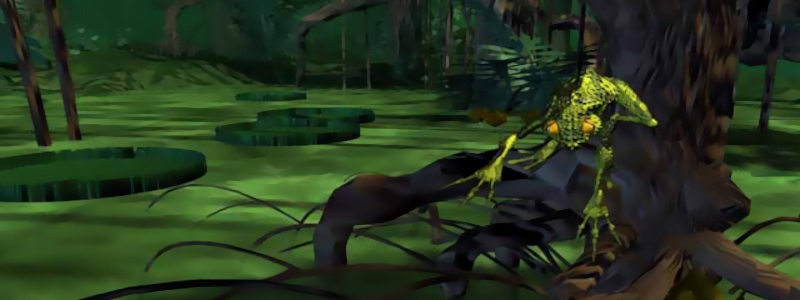
Genewars was voted the most disappointing game of 1996 and that year had Sonic 3D Blast.
Genewars tells the story of another RTS, rudely interrupted. Three major galaxy-spanning empires were kicking the spores out of one another, and then oops, a fourth-dimensional species of super-aliens woke up, turned up to look at the ruckus we were making, and just got rid of all the WMDs we were using, assigning us the task of cleaning up the entire galaxy we had been spending all that time wrecking. Then, like fusy parents, they dumped us on various planets to rebuild the ecosystem (while uh, mining a bit) and re-establishing life and plant cultures, and refuse to let us out of our rooms until it’s cleaned up, thank you.
Completely unironically, I think this concept whips ass, in that it has this really interesting potential to show things like the infrastructural impact of galactic war while keeping your attention on things like ecosystem pressures and keystone species. The game you get is not that game, not by a long shot, but it is a good explanation for why your armies never seem to have uh, a gun.
You control a small number of specialists that land on a planet. One of them can build things, one of them can plant flowers, one of them can scrutinise animals and scan their DNA, and one of them can do The Medicals. Since that isn’t enough hands to do all the work, you get to use a Goop Machine to make clones of nearby animals, from one of four categores: Bird, Crab, Dinosaur, and Mule, each with their own speciality. Then, you can synthesise two of them together, to get a unit that can do most of what either half does.
Neat!
Eventually, the aliens – not you, aliens, the other aliens – will show up and see how good a job you did at running this planet this time, and give you points that don’t matter on the way to the next level, and start it up all over again. As with the RTS genre in general, you will find it full of resets and resource deprivation, and the fun of the game, ostensibly, comes in rebuilding, over and over, and getting more and more exciting things unlocked. It’s a classic game loop, something you’d see in your Wars of Craft and Reds of Alert.
While I’m also heaping the faint praise on this ancient beast, I would say that it is also funny? Like there’s a gently comical tone to the whole thing, the aliens move in a delightful way. The characters are kinda silly and goofy and have a pleasantly charming style. Aesthetically, this game is honestly really good.
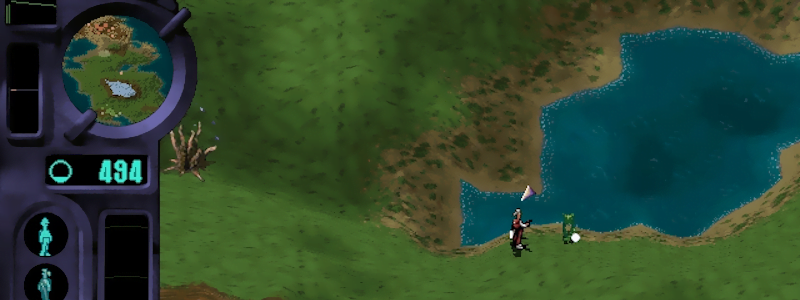
The game is a failure, of course.
It’s an interesting thing to look at now, in hindsight, because of both things it does well and the things it fails at. The interface is primitive – not just by the standards of now, but by the time. There are a bunch of interface improvements that other RTS franchises had done, and this game just didn’t incorporate.
There’s also the way that what the game promises it kind of can’t deliver. When you’re presented with a very fluid mixing aesthetic for these different animals, you might get it into your head that you can mix them together in, well, a fluid way – that you may be able to make a muley crab or a crabby dinosaur mule, or, you know, that kind of delicate mix. Instead, though, the game is about strictly A+B animals. Half mule, half crab. Half dinosaur, half bird, which you know, cladistically, that doesn’t make any sense, but whatever. The point is that the game opens with this promise of infinite variety, and then it delivers something that absolutely falls short.
Which is reasonable! It wasn’t like they’d ever give you the infinite variety it promised.
There’s no real AI to the game, either – weird how so many of these games around this period just relied on a really simple set of priorities. The game can only really handle difficulty by producing more stuff against you, and less stuff for you to work with. It stands to reason, though, because AI is really hard? It’s not like Bullfrog had experience with making AI enemies in other games or in this engine. Which was, if you’re curious, the Magic Carpet engine.
Yeah.
I mean you can see it, with the ground levelling mechanic. I mean I can see it.
Am I the problem?
Maybe I care a bit too much about Bullfrog as a company, in this really weird way, like it’s an old school friend I know really well and none of you people appreciate them, even as I just make the worst kind of fun of them. And like, they were absolutely very important to PC gaming, which was the main thing from my childhood that didn’t feature occasional bouts into weird religious instruction. And Bullfrog were a company that had produced not just some classics, but classics that kind of defined why the PC was its own potential platform, showing an avenue for games that didn’t live and die on a controller and instanteous response.
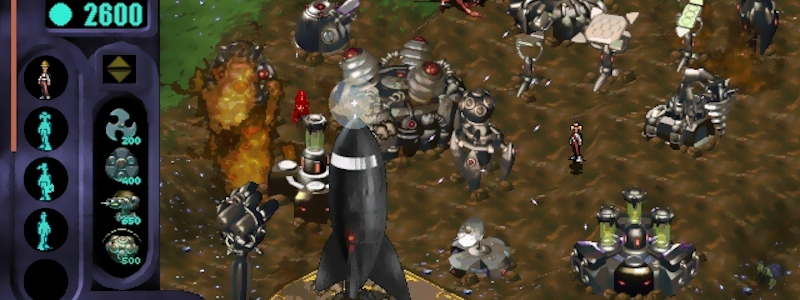
But the reason I want to talk about Genewars, this game specifically, when there’s explicitly nothing going on right now, when there’s nothing related to it that can come up or happen is that it seems that I’ve finally found a moment when nobody cares about Peter Molyneux, so I can talk about how stupidly we treat the man in a world of videogames.
The line goes that Peter Molyenux made Populous and Theme Park and sometimes Fable, so he’s this great visionary designer, responsible for these really interesting, creative games. What this kind of narrative tends to do, though is forget that Peter Molyneux may have made a few good games… but he also made a bunch of really mediocre ones. And even in 1996, people were looking at Molyneux’s work in terms of the hype he presented for them, and then the game that got delivered failing to meet it.
The story behind the making of Genewars is one of those miserable ones where the crew worked hard, and Peter Molyneux gave up on it, leaving Sean Cooper to get the game out the door. He’s not happy with Genewars, mind you; he describes it like one might a bad shift at work, that hey, it got out the door, on time, and he did the best he could with what he had. But we don’t think of Peter Molyneux as the guy who failed to make Project Milo or sulked his way through the development of Genewars. These kinds of games serve as part of the junk DNA of his legacy, things we don’t really talk about or look at too closely. And back in 1996, Peter Molyneux promised an amazing game with a bold vision, found it hard, threw a tantrum, and left other people to clean up after him.
In 1996.
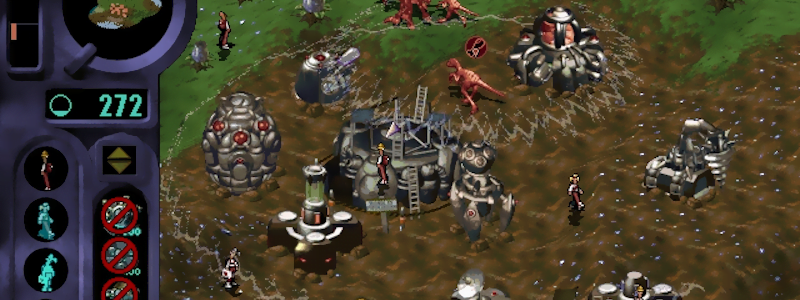
We tell the story of game makers as if their lineage of successes are simple. And they’re not. Not even a little. The interface in this game was tangibly terrible, but why is that? These people made Populous, which was praised for its excellent, tight interface, and Magic Carpet, which brought fast flying FPS style action and city building to the same space.
But that’s not how it is. It isn’t that you Do Good Games and that increases Good Gamesness. You still have to think about people, the people you’re presenting and the play experience, and how they interact with the game, and you have to think about how you don’t fail them, how you don’t fall into the traps of having made the game, and you have to do all these things, and more than anything else, making lots of games doesn’t indicate some amazing insight, it suggests practice.
Ultimately, though, is Genewars part of the history of Peter Molyneux? Not in conventional wisdom. Nobody’s pointing out ‘this dude threw a tantrum and sulked his way through the second half of the game’s development.’ It’s just… mutations and wiggles in the chromosomal concoction of how we see games being grown.
I think the metaphor of this game is unconsciously excellent for what it is. It promises you freedom, if you’ll put down the type of game it is. It’ll give you freedom, if you obey its rules. It’ll listen to your orders if you’re very precise about giving them. And all of it is to prove you’re good enough to play this game that’s being overseen by this infinite creature that can just make everything you think matters go away if you don’t fulfill their whims.
In this game, you aren’t the god.
You’re the god’s subject.
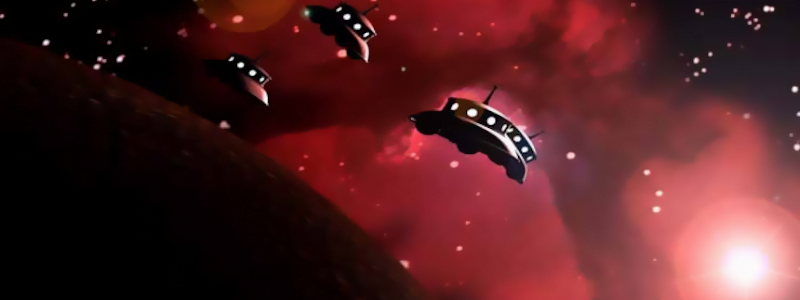
You can just go get the game, right now. You can head on over to an Abandonware website, and download a copy of Genewars and run it on Dosbox and play it for yourself. I know you won’t – statistically speaking, people aren’t interested in that? – but you can check out my sources on this one, and see the game that’s kind of just there.
It’s very linear, too, if you want to play through it. You will get most of the same experience I did – just whether you go further than I did, or abandon it before I did.
Genewars is very important to remember, though, because its story – not the story in the game, but the story of the game that happened, is one of the stories we tell ourselves about videogames
